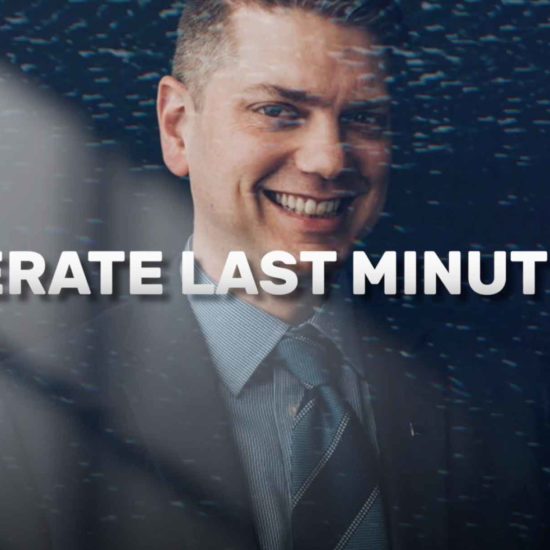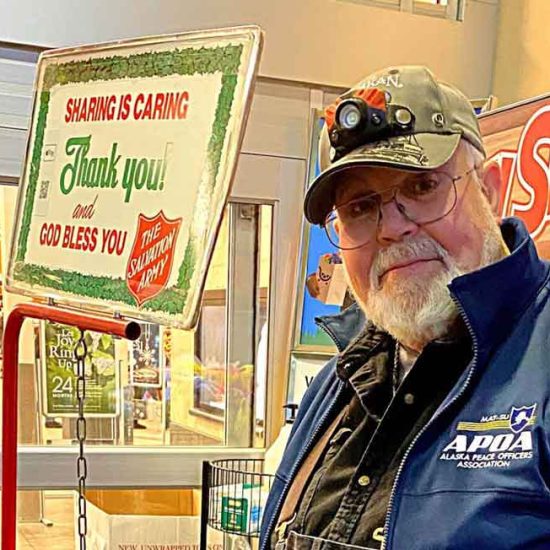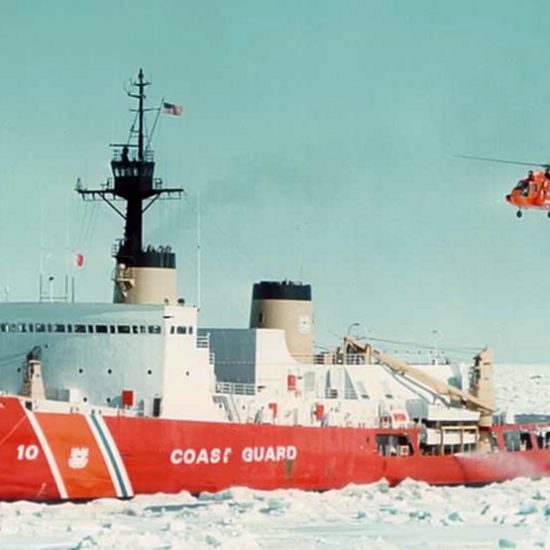The Board of Fish (BOF) had their meeting on regulating the Cook Inlet fishery over 10 days starting the last week in February. The meeting was an utter disaster for the quarter million sport fish license holders, the 26,000 personal use, dip net people, and a resounding victory for the 1,100 commercial fishing permit holders in the inlet. The BOF, led by three Bill Walker appointees undid two decades of management measures intended to maximize availability to the commonly shared resource for all users. This is a classic example of regulatory capture of a resource and the government entities by the very group that the regulations are aimed at controlling.
The BOF listened to complaints of Cook Inlet commercial fishermen and decided that they had, in the words of Board Chairman Jensen suffered enough. Jensen is a commercial fishermen from Petersburg. They also listened to a variety of complaints by sport fishermen, dip netters and subsistence users and decided that the interests of Cook Inlet commercial fishermen were more important a quarter million of their neighbors and visitors.
The short description is that Cook Inlet is managed so as to maximize the second run of Kenai reds caught by 1,100 commercial fishermen. It is nicely ensconced in 5 AAC 21.360 (a) which states:
“The department shall manage the Kenai River late-run sockeye salmon stocks primarily for commercial uses based on abundance.”
This is in direct conflict with the state constitution which also states:
“The legislature shall provide for the utilization, development, and conservation of all natural resources belonging to the state, including land and waters, for the maximum benefit of the people….”
Apparently today, “maximum benefit of the people” means maximum benefit of commercial fishermen, which is how the Walker BOF is managing the resource.
This makes me wonder what is really going on here, as Alaskans tend to drop all manner of lawsuits against infrastructure, mines, oil exploration, logging, normally with some variation of the theme that whatever it is needs to be instantly and permanently shut down to save the salmon. Yet every single one of those people and groups are completely silent as Cook Inlet commercial fishermen, aided and abetted by the Walker BOF, decimate salmon returns throughout the region.
Further, we have an endangered species here in Cook Inlet – the belugas – which NMFS created by foolishly allowing native whaling crews to cut numbers by 75% over a two year period some 20 years ago. The number of whales haven’t been increasing. Why would that be? Could it be that the silvers, coho and pinks they normally feed on in August and September have been swept up in commercial nets on their way north and are never available for them to eat?
How would you go about proving that? One way would be to take a look at late run fish in various upper Cook Inlet streams and see what has happened to the runs over the last couple decades. I built the following spreadsheet based on data from the ADF&G Sportfish fish count database.
| Year | Deshka King | Deshka Coho | Fish Creek Reds | Little Su Coho | Russian River Second Run Reds | Russian River Coho | Kenai River Second Run Reds |
| 2016 | 22,774 | 6,816 | 46,202 | 9,998 | 37,827 | 503 | 1,383,692 |
| 2015 | 24,316 | 10,775 | 102,309 | 12,421 | 46,223 | 385 | 1,709,053 |
| 2014 | 16,335 | 11,578 | 43,915 | 24,211 | 52,277 | 2,990 | 1,524,706 |
| 2013 | 18,531 | 22,141 | 18,912 | 13,583 | 31,573 | 1,758 | 1,358,781 |
| 2012 | 14,096 | 6,825 | 18,813 | 6,770 | 54,911 | 423 | 1,581,555 |
| 2011 | 19,026 | 7,508 | 66,678 | 4,826 | 41,529 | 157 | 1,599,217 |
| 2010 | 18,594 | 10,390 | 126,836 | 9,182 | 38,848 | 642 | 1,294,885 |
| 2009 | 11,960 | 27,348 | 83,480 | 9,523 | 80,088 | 353 | 1,090,057 |
| 2008 | 7,533 | 12,724 | 19,339 | 18,485 | 46,638 | 1,959 | 917,138 |
| 2007 | 18,714 | 10,575 | 27,948 | 17,573 | 53,068 | 1,188 | 1,229,944 |
| 2006 | 31,150 | 59,419 | 32,562 | 8,786 | 89,160 | 1,038 | 2,064,726 |
| 2005 | 37,725 | 47,887 | 14,215 | 16,839 | 59,473 | 686 | 1,908,823 |
| 2004 | 57,934 | 62,940 | 22,157 | 40,199 | 110,244 | 470 | 1,945,383 |
| 2003 | 40,069 | 17,305 | 91,952 | 10,877 | 157,469 | 545 | 1,656,026 |
| 2002 | 29,427 | 24,612 | 90,483 | 47,938 | 62,115 | 3,260 | 1,339,681 |
| 2001 | 29,004 | 29,915 | 43,486 | 30,383 | 74,828 | 9,888 | 906,333 |
| 2000 | 35,242 | 26,297 | 19,533 | 15,436 | 56,580 | 4,819 | 900,695 |
| 1999 | 29,649 | 4,563 | 26,746 | 3,017 | 139,863 | 2,964 | 1,137,003 |
| 1998 | 15,409 | 6,773 | 22,865 | 15,159 | 112,480 | 4,017 | 1,084,993 |
| 1997 | 35,587 | 8,063 | 55,035 | 9,894 | 65,905 | 4,105 | 1,512,731 |
| Escapement | 13,000 – 28,000 | No goal | 20,000 – 70,000 | 10,100 – 17,700 | 30,000 – 110,000 | No goal | 1,100,000 – 1,350,000 |
Take a look at the portions highlighted in yellow – late run coho in the Deshka, Little Su and both late runs in the Russian. See anything interesting? Deska coho between 2010 – 2016 never get much above 22,000 fish. Before that, there were seven years above that number with two in the vicinity of 60,000 silvers. In the Little Su, we see the same thing, with a single peak of 24,000 fish during the period, while three runs well over 40,000 before that. How about the Russian? It is even more pronounced with the Russian. Red returns are only once above 50,000 fish during the period while there are at least four instances over 110,000 fish before the recent period and 12 years above 50,000 reds in the river before that period. Final piece is the very late run coho in the Russian. There are only two years over 1,000 fish, though one is nearly 3,000. During the period before that, there are nine years above 1,000 coho with one of them nearly 10,000.
Lack of coho is an important indicator, for they are late run fish. And if the fish aren’t hitting the rivers that late in the season, they are no longer in the Inlet. So where are they going? ADF&G Commercial Fish gives a hint. The following spreadsheet was generated from one of their yearly summaries of catch.
| Year | Chinook | Sockeye | Coho | Pink | Chum | Total non-sockeye | Total Catch | Percent of non-sockeye |
| 2016 | 9,613 | 2,382,635 | 137,424 | 379,077 | 126,529 | 652,643 | 3,035,278 | 21.50% |
| 2015 | 10,798 | 2,649,667 | 216,032 | 48,004 | 275,960 | 550,794 | 3,200,461 | 17.21% |
| 2014 | 4,660 | 2,343,529 | 137,376 | 642,879 | 116,093 | 901,008 | 3,244,537 | 27.77% |
| 2013 | 5,398 | 2,683,224 | 260,963 | 48,275 | 139,365 | 454,001 | 3,137,225 | 14.47% |
| 2012 | 2,527 | 3,133,839 | 106,775 | 469,598 | 269,733 | 848,633 | 3,982,472 | 21.31% |
| 2011 | 11,248 | 5,277,440 | 95,276 | 34,030 | 129,202 | 269,756 | 5,547,196 | 4.86% |
| 2010 | 9,901 | 2,828,367 | 202,256 | 292,672 | 228,670 | 733,499 | 3,561,866 | 20.59% |
| 2009 | 8,750 | 2,045,794 | 153,210 | 214,321 | 82,811 | 459,092 | 2,504,886 | 18.33% |
| 2008 | 13,333 | 2,380,135 | 171,869 | 169,368 | 50,315 | 404,885 | 2,785,020 | 14.54% |
| 2007 | 18,029 | 2,192,730 | 177,853 | 404,111 | 64,033 | 664,026 | 2,856,756 | 23.24% |
| 2006 | 18,029 | 2,192,730 | 177,853 | 404,111 | 64,033 | 664,026 | 2,856,756 | 23.24% |
| 2005 | 28,171 | 5,238,168 | 224,657 | 48,419 | 69,740 | 370,987 | 5,609,155 | 6.61% |
| 2004 | 26,922 | 4,926,774 | 311,056 | 357,939 | 146,164 | 842,081 | 5,768,855 | 14.60% |
| 2003 | 18,490 | 3,476,159 | 101,756 | 48,789 | 120,767 | 289,802 | 3,765,961 | 7.70% |
| 2002 | 12,714 | 2,773,118 | 246,281 | 446,960 | 237,949 | 943,904 | 3,717,022 | 25.39% |
| 2001 | 9,295 | 1,826,833 | 113,311 | 72,559 | 84,494 | 279,659 | 2,106,492 | 13.28% |
| 2000 | 7,350 | 1,322,482 | 236,871 | 146,482 | 127,069 | 517,772 | 1,840,254 | 28.14% |
| 1999 | 14,383 | 2,680,510 | 125,908 | 16,174 | 174,541 | 331,006 | 3,011,516 | 10.99% |
| 1998 | 8,124 | 1,219,242 | 160,660 | 551,260 | 95,654 | 815,698 | 2,034,940 | 40.08% |
| 1997 | 13,292 | 4,176,738 | 152,404 | 70,933 | 103,036 | 339,665 | 4,516,403 | 7.52% |
Every vessel that catches anything has to report it. While the commercial fleet is targeting second run reds, it is most certainly catching a LOT of other fish. The total non-sockeye caught is in the vicinity of 20% of the total catch most years.
Where have the coho gone? Into commercial nets. This is why silver fishing around Cook Inlet has been so terrible over the last decade or so. It is why we no longer see beluga haunting Turnagain and Knik Arm silver fisheries in August and September.
Final piece of the puzzle is the personal use fishery, the dip netters. This is a fast growing fishery that had its best two years in 2011 – 2012. It is also despised by the commercial fleet, for every single second run red caught by a dip netter is a red that the commercial fishermen believe belong to them. And the BOF and ADF&G Kenai commfish managers have managed to cut the total catch nearly in half over the last four years via an endless series of back to back to back to back emergency openings. Once again, the data is from ADF&G Commfish.
| YEAR | Fish Creek Dip Net | Kasilof River Gillnet | Kasilof River Dip Net | Kenai River Dip Net |
| 2016 | 0 | 26,539 | 58,273 | 259,057 |
| 2015 | 19,260 | 27,567 | 89,000 | 377,532 |
| 2014 | 5,829 | 22,567 | 88,513 | 379,823 |
| 2013 | 0 | 14,439 | 85,528 | 347,222 |
| 2012 | 0 | 15,638 | 73,419 | 526,992 |
| 2011 | 5,236 | 26,780 | 49,766 | 537,765 |
| 2010 | 23,705 | 21,924 | 70,774 | 389,552 |
| 2009 | 9,898 | 26,646 | 73,035 | 339,993 |
| 2008 | 0 | 23,432 | 54,051 | 234,109 |
| 2007 | 0 | 14,943 | 43,293 | 291,270 |
| 2006 | 0 | 28,867 | 56,144 | 127,630 |
| 2005 | 0 | 26,609 | 43,151 | 295,496 |
| 2004 | 0 | 25,417 | 48,315 | 262,831 |
| 2003 | 0 | 15,706 | 43,870 | 223,580 |
| 2002 | 0 | 17,980 | 46,769 | 180,028 |
| 2001 | 436 | 17,201 | 37,612 | 150,766 |
| 2000 | 6,925 | 14,774 | 23,877 | 98,262 |
| 1999 | 1,083 | 12,832 | 37,176 | 149,504 |
| 1998 | 4,036 | 15,975 | 45,161 | 103,847 |
| 1997 | 3,277 | 17,997 | 9,737 | 114,619 |
| 1996 | 17,260 | 9,506 | 11,197 | 102,821 |
The 1,100 commercial permit holders in Cook Inlet are nicely politically connected. They believe they have a God-given right to be first at the table to catch with impunity what is a commonly owned resource. They can be opposed politically, but this legislature does not seem to want to join that fight, despite clucking noises made last summer by Bill Wielechowski and Les Gara who are nowhere to be found following the recently completed BOF meeting. Perhaps they are busy. Perhaps they are putting on a good show.
The problem Cook Inlet commercial fishermen are responding to is an economic one of their own making. Normally when one makes poor economic decisions, they are ground into dust. In the 1970s, the State of Alaska led by commercial fishermen passed a ban on aquaculture for finfish (salmon, halibut and Pollock). This was at its most basic level a protectionist measure intended to protect them from fish farming competition.
The problem is that 40 years later, the rest of the world (Chile, Scandinavia, Canada) has figured out how reliably grow and sell a commercially farmed salmon product. They learned how to deat with parasites, diseases and pollution (all things that other ranchers have to deal with) well enough to now sell over 70% of all the salmon in the world today. Per fish prices aren’t coming up any time soon, if ever.
So if you are a business owner who cannot get the per fish price up, how do you increase what you make? Simple. You catch more fish, which is precisely what the BOF has decided they need to do.
Why commercial fishing business owners are more important than guides, dip netters, fly shop owners, sport fish equipment retailers, those who cater to tourist fishing, or any of the other quarter million people who live and work to fish in south central Alaska is beyond me, but that is where we stand today.
Solution? First would be to increase escapement in the Kenai for second run reds to a minimum of 2.5 million fish. Second would be to convert the drift fleet from an inlet-wide operation to a terminal fishery, with openings timed so as to allow large slugs of fish to be available for other user groups. Finally, commercial catch of all other species of salmon should be discouraged and perhaps even punished at every level of management.
Somewhere along the line we as a state will have to repeal the ban on fish farming before the commercial fleet is completely crushed in the worldwide marketplace and in response completely crushes the rest of us in their death throes as they vacuum every single salmon out of Cook Inlet in a desperate attempt to remain in business.
What happened in Anchorage over the last couple weeks with the Board of Fish was a travesty, a disaster for everyone who wets a line. Its damage will take years to repair. Thank you, Bill Walker whose appointees did just what he wanted them to do.
Alex Gimarc lives in Anchorage since retiring from the military in 1997. His interests include science and technology, environment, energy, economics, military affairs, fishing and disabilities policies. His weekly column “Interesting Items” is a summary of news stories with substantive Alaska-themed topics. He is a small business owner and Information Technology professional.











